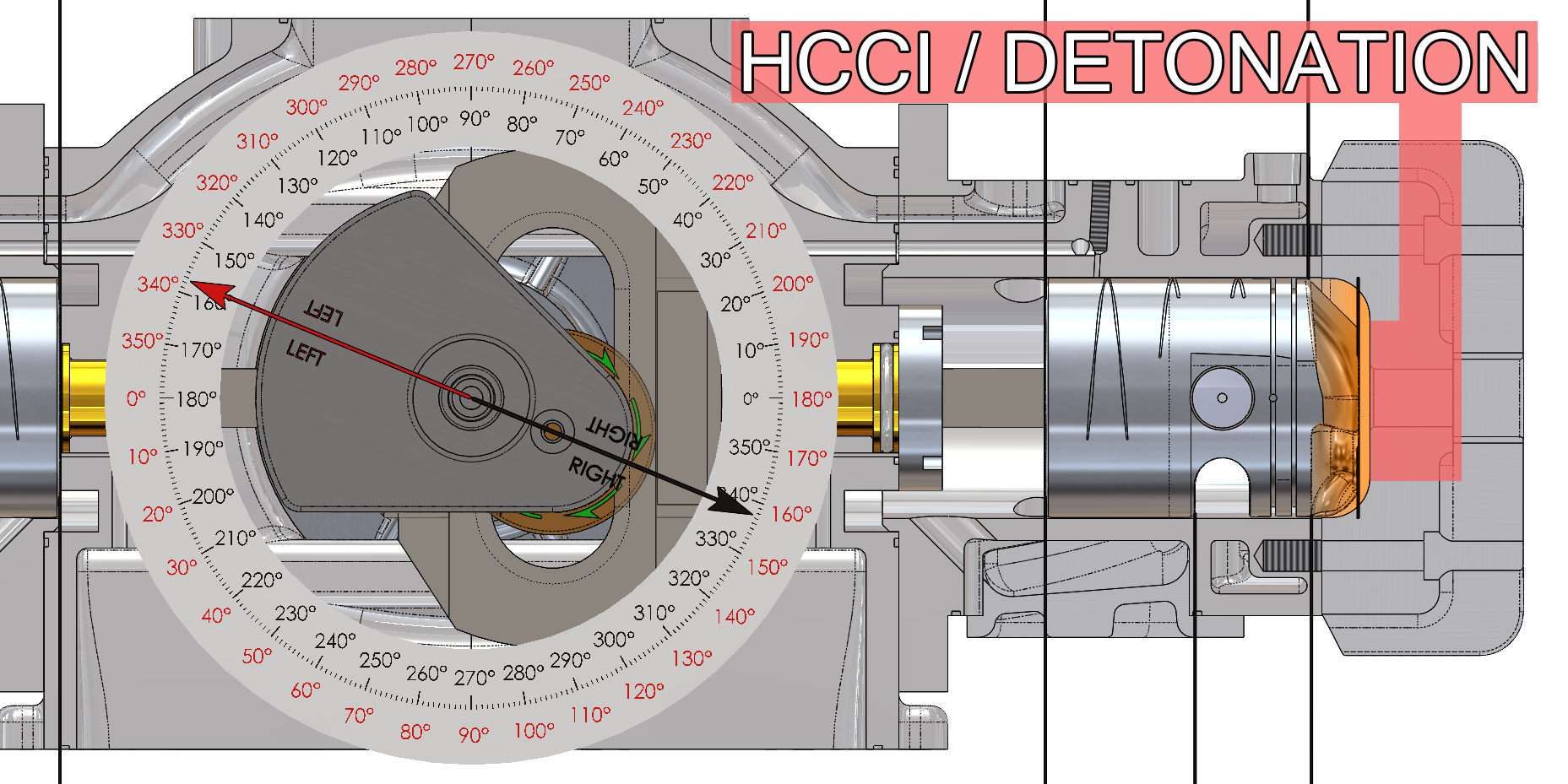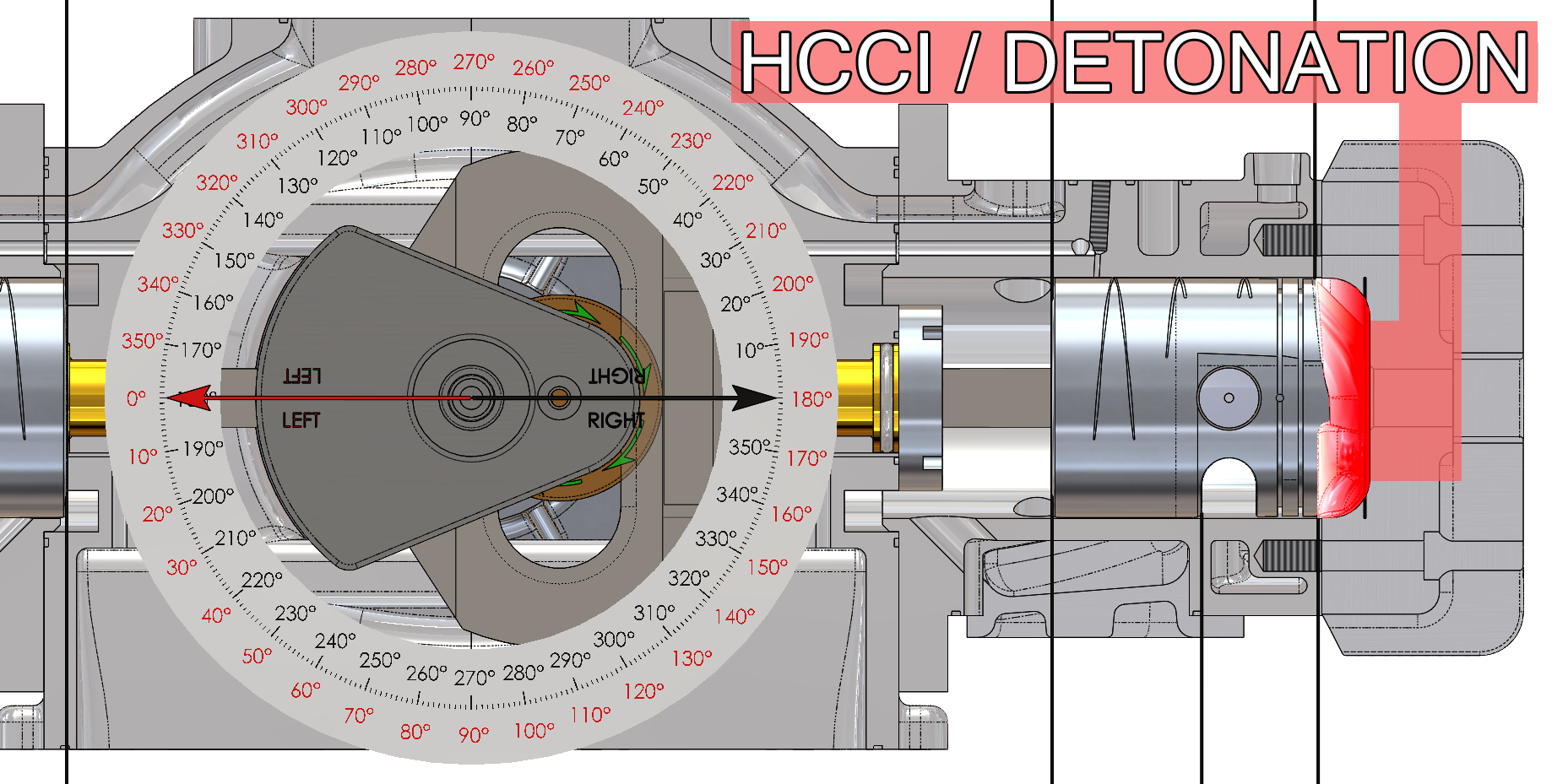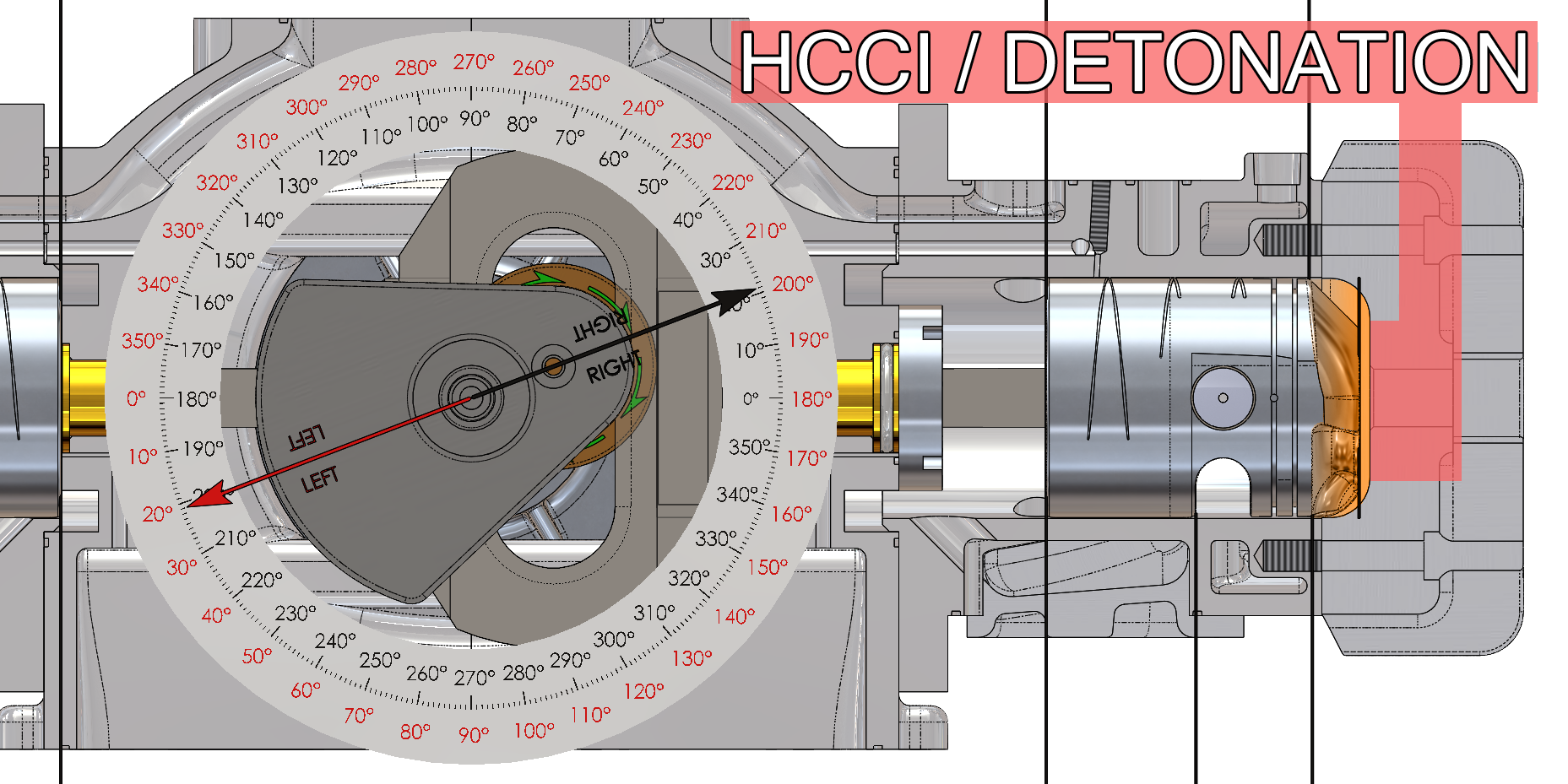HCCI Detonation
Right Cylinder
HCCI Detonation
The Bourke Engine operates on the principle of an induced detonation which can only be produced with a high rpm, extremely high compression ratio, up to 90 degrees of spark advance (if you are using spark ignition), an extremely lean air/fuel mixture where the fuel has been completely vaporized (broken down to atomic particles) and the air/fuel mixture has been completely homogenized. Homogenous charge compression ignition (HCCI) has been hailed as the “Holy Grail” for internal combustion engines (ICE) and laboratories and universities worldwide have “re-discovered” what the “old masters” wrote volumes about in the late 1800’s, but failed to name it HCCI. One of those “old masters” was Berthalot who coined the term “Berthalot Explosive Wave” (detonation) and stated that the discovery was of no interest to the design engineer because no known engine could withstand such a violent force. Russell Bourke asked himself; why not design an engine that could withstand the violent force of detonation, and he set about doing just that.
The HCCI research data from Peter Van Blarigan summarized in Table III illustrates there was only one fuel (n-Pentane) that achieved complete combustion (HCCI/detonation) using the Rapid Compression Expansion Machine (RCEM). The refined Scottish Yoke mechanism utilized in the Bourke Engine provides a top stop for 45 degrees at or near top dead center which allows for the complete combustion (HCCI/detonation) of any of the heavier fuels with a two (2) stage combustion process. The compression ratio required to start the combustion process for n-Pentane was reported to be around 18:1 (Russell Bourke called this the “carbon trigger”) with the second stage combustion process going to completion at a compression ratio of 23:1. Both the first and second stage of the combustion process required 600 microseconds. At 12,000 rpm, the top stop of 45 degrees at or near top dead center would take a little over 625 microseconds. Using n-Pentane as a fuel, the Full Authority Digital Engine Control (FADEC) system would restrict the exhaust so that the compression ratio would be 18:1 just as the engine is entering the top stop position (22.5 degrees before top dead center), the “carbon trigger” would start the combustion process, the residual kinetic energy in the piston/rod/yoke plate assembly would be cushioned to a stop, the combustion process (HCCI/detonation) would be completed at a little beyond 21 degrees after top dead center. The crankshaft reaches a point of mechanical advantage at 22.5 degrees after top dead center and is “shot” (like a bullet from a rifle) towards bottom dead center. For any of the heavy two (2) stage fuels, or any combination/mixture of compatible Bio and/or fossil two (2) stage fuels, the FADEC system would restrict the exhaust to the point where the carbon trigger initiates the combustion process with sufficient time allowed for the completion of the process (HCCI/detonation) before the crankshaft reaches the point of mechanical advantage (22.5 degrees after top dead center).
All of the laboratories and universities worldwide have declared HCCI as the “Holy Grail” for internal combustion engines, but they are trying to integrate HCCI into conventional internal combustion engines while avoiding detonation, a task that has proved to be challenging at best. The latest player that plans on introducing an HCCI engine in 2019 is Mazda with their Skyactiv-X which they claim will deliver as much as 30% more fuel efficiency over its Skyactiv-G engine, already one of the most fuel efficient gasoline engines on the market.
All of the volumes shown below for the 10.842 cubic inch (177.6748 cc) model were calculated using Solid Works:
- The volume under the piston when it is at Top Dead Center (TDC) is 166.478 cubic centimeters (cc), or 10.1591 cubic inches.
- The volume under the piston when it is at Bottom Dead Center (BDC) is 88.7875 cc, or 5.4181 cubic inches.
- The volume in the combustion area when the piston is at Bottom Dead Center (BDC) is 88.8374 cc, or 5.4212 cubic inches.
- The volume in the combustion area when the piston is at Top Dead Center (TDC) is 7.2358 cc, or 0.4416 cubic inches.
The compression ratio for this model is calculated by dividing the volume at BDC by the volume at TDC (88.8374 cc/7.2358 cc =12.28:1 compression ratio).
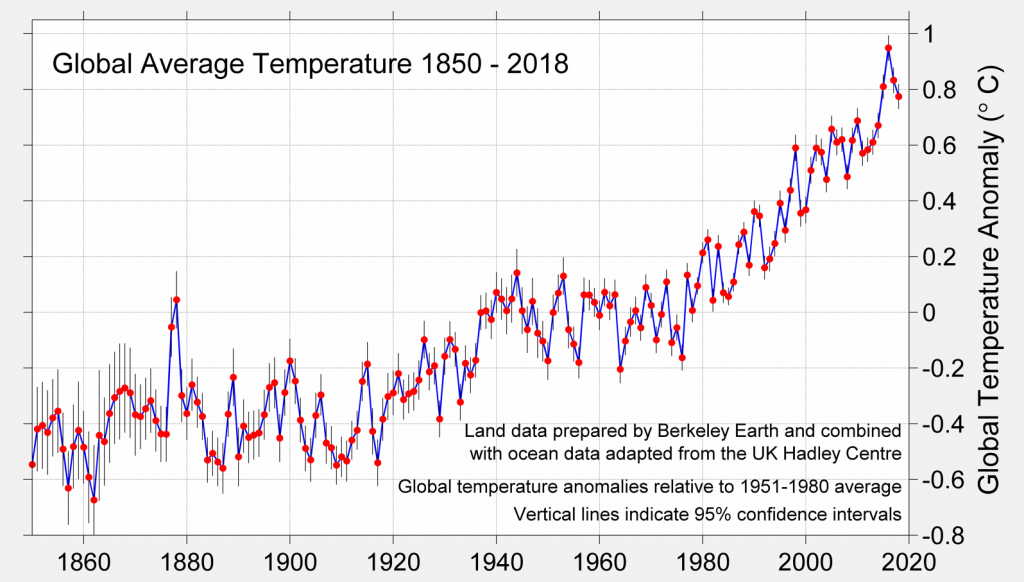
Global Warming
The chart shows the increase in global average temperature from 1850 to 2018.
Source: Berkeley Earth
Carbon Dioxide In Our Atmosphere
Read all of the scientific reports!!!!!! We are at 415 parts per million, more than anytime in the last 800,000 years. The Bourke Engine using fuel from algae for all transportation and distributive power generation will reduce our carbon footprint for these activities by AT LEAST 85%.
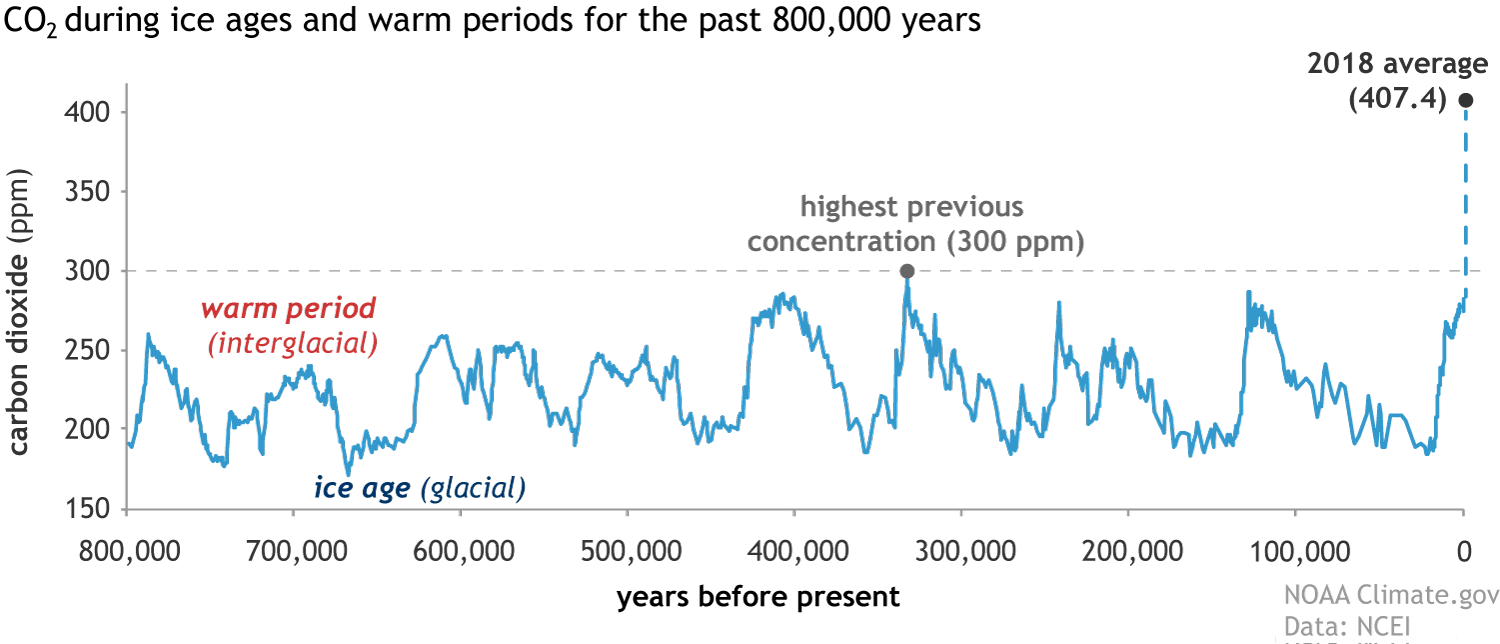

WAKE UP WORLD, WE ARE KILLING OUR PLANET!!!!
2019 – Was the Second Hottest Year on Record!!!!
Global Ocean Acidification
As our oceans absorb excess carbon dioxide, the carbon dioxide reacts with the sea water forming carbonic acid which is changing the pH of our oceans making them more acidic. Research is ongoing as to how the increased acidic level of our oceans is affecting corals and marine life.
Source: IPCC 2007
©2019 Copyright Bourke Engine Project, LLC
All Rights Reserved. All of the information contained within this website can be used, with permission, by any other website providing that the requesting party agrees to the terms and conditions as described in the PERMISSION FORM.
© Copyright 2019-2023 Designed by Lynn

